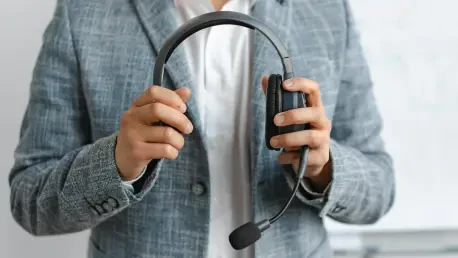With a rich professional foundation in management consulting, Marco Gaietti brings a wealth of expertise to the realm of business management. His insights touch on strategic management, operations, and customer relations, making him a valuable resource in understanding the evolution of corporate wellness programs driven by technology. This interview will delve into how businesses are leveraging innovative tools like wearables to enhance both physical and mental wellbeing of employees, an area of personal passion for Marco.
Can you explain what led to the evolution of corporate wellness programs from basic gym memberships to tech-driven initiatives?
The shift to tech-driven initiatives came from growing awareness about the holistic nature of employee wellness, including both physical and mental health. Companies realized that basic gym memberships were just scratching the surface of what wellness could mean. With advancements in technology, businesses have the resources to address more nuanced aspects of health through wearables. These can monitor and offer insights that gym memberships can’t, creating a comprehensive approach to care that’s proactive rather than reactive.
How important is mental health support in today’s workplace for both employees and employers?
It’s fundamental. Mental health directly affects productivity, engagement, and overall workplace morale. When employees have access to effective mental health support, they not only contribute more positively to the organizational goals but also foster healthier work dynamics. From an employer’s perspective, investing in mental health is investing in the long-term success and sustainability of their workforce. It’s a matter of nurturing human capital while building resilience against common workplace stressors.
What are some of the most desired mental health-related benefits among employees, according to recent surveys?
Many employees express a strong desire for access to stress management tools and wellness apps. Licensed therapy access and employee assistance programs are also highly sought after. These benefits cater to varying needs, providing support beyond traditional means and allowing workers to find and utilize resources that fit their personal routines and situations effectively.
How does poor employee mental health impact business performance and the global economy?
The repercussions of poor mental health are far-reaching. On a micro level, businesses witness reduced productivity and increased absenteeism, which affects their bottom line. On a macro scale, according to the World Health Organization, there’s an economic toll of about $1 trillion annually due to reduced productivity from depression and anxiety. This underscores the urgent need for effective wellness strategies within corporate structures.
What role do wearable devices play in modern corporate wellness programs?
Wearable devices have transformative potential in corporate wellness programs. They offer real-time data on various health metrics, which employees can use to make informed lifestyle changes. For employers, these devices aggregate data that helps to optimize workplace wellness strategies, driving participation and health awareness through gamified challenges. They bridge the gap between awareness and action, making wellness a more dynamic and integrated part of the work day.
How do traditional fitness devices track health metrics, and what are some examples of these metrics?
Traditional fitness devices track metrics such as steps, heart rate, and sleep. They’ll often use sensors to monitor physical activity and rest patterns, providing feedback to users. This tracking method serves as a tool for individuals to assess their daily routines, identify areas for improvement, and set realistic health goals. Yet, they fall short in addressing mental wellbeing specifically, requiring users to interpret the data and take initiative themselves.
Why do you think about one-third of users stop using wearable fitness devices within six months?
A significant factor is the passive nature of traditional devices. They require users to constantly engage with and interpret their data, which can become burdensome or less engaging over time. If the novelty wears off without delivering tangible benefits, users often discontinue use. There’s also the aspect of convenience – if a device doesn’t fit seamlessly into everyday life, people are less likely to integrate it long-term.
What are some of the limitations of traditional fitness wearables in managing real-time stress?
Traditional fitness wearables primarily focus on activity and health tracking, missing the mark on real-time stress management. They don’t interact with the user beyond data collection, making them ineffective for real-time interventions. The lack of active responses to stressors leaves a gap where more innovative devices can step in, offering active stress mitigation rather than just passive monitoring.
Can you explain what therapeutic wearables are and how they differ from traditional fitness trackers?
Therapeutic wearables go beyond normal tracking; they offer real-time interventions designed to reduce stress and promote relaxation. Instead of simply collecting data, these devices use stimulation methods that interact with the body’s innate systems to induce states of calm and focus. Unlike traditional trackers, therapeutic wearables do the work for you during stressful times, offering immediate relief and ongoing support.
What is Apollo Neuro, and how does it aim to support employee health?
Apollo Neuro is an innovative wearable that uses vibrations to stimulate the vagus nerve, aiding in stress management and focus without requiring active participation from the user. It shifts the responsibility from conscious effort to the device itself, promoting calmness and enhancing productivity. By doing so, it serves as an interface between health and productivity, redefining what employee wellness can encompass.
How does Apollo Neuro target stress response systems, and what makes it unique?
Apollo Neuro targets stress response systems by directly stimulating the vagus nerve through gentle vibrations. This approach is unique because it taps into those bodily systems without requiring a mental focus or significant cognitive effort from the individual. It allows the body to lead in teaching the brain a sense of calm, maximizing the benefit by operating beneath the conscious level.
Can you describe what “bottom-up learning” means in the context of wearable wellness devices?
Bottom-up learning involves the body taking charge of teaching the brain, as opposed to the brain commanding relaxation. By experiencing the physical effects of calm, users are better able to recognize and recreate those states independently over time. This body-first approach efficiently facilitates learning and adaptation, crucial for busy professionals who can’t always dedicate time to conventional relaxation methods.
What is Sensate, and how does it function for stress reduction during work hours?
Sensate is a therapeutic wearable that uses infrasonic chest vibrations to actively stimulate the vagus nerve, aiding stress reduction throughout the workday. Unlike modalities that require downtime or concentration, Sensate operates passively, letting employees benefit from stress relief while continuing their routine work tasks, thus fitting effortlessly within daily schedules.
How do devices like Earthing Mats contribute to wellness, and what are their potential benefits?
Earthing Mats simulate the natural electrical field of the Earth when in contact with the human body. This connection may help regulate circadian rhythms and could reduce inflammation. These benefits stem from maintaining the body’s electrical equilibrium, potentially improving sleep and decreasing stress responses. As they fit seamlessly into workspaces, they open up another dimension in wellness technology.
What role does scientific research play in validating new wearable wellness technologies?
Scientific research is critical in validating the efficacy and safety of wearable wellness technologies. It provides rigorous testing and evidence that these innovations genuinely deliver on their promises. As researchers continue to investigate, peer-reviewed studies and trials offer transparency and confidence to both consumers and businesses looking to integrate these devices into workplace wellness programs.
Can you discuss some of the findings from studies on Apollo Neuro and Sensate?
Research on Apollo Neuro has highlighted its ability to decrease stress, enhance focus, and improve sleep significantly. Sensate studies found noticeable reductions in perceived stress and anxiety, along with sleep benefits. These findings suggest significant potential for these devices to transform corporate wellness by offering mental health interventions that are both efficient and compatible with workspaces.
Are there any privacy concerns associated with wearable wellness devices? If so, what are they?
Privacy concerns center around the collection and sharing of personal health data. Wearable devices collect sensitive information which, if not properly safeguarded, could be vulnerable to misuse or breaches. As the technology evolves, there’s growing attention on ensuring robust security measures and developing regulatory frameworks to protect user data and guarantee transparency.
How do therapeutic wearables complement traditional fitness trackers?
Therapeutic wearables complement traditional fitness trackers by offering immediate stress relief, whereas fitness trackers are generally used for long-term health monitoring. Both types of devices serve essential roles—one supporting ongoing health awareness, the other providing real-time stress management—creating a comprehensive wellness strategy when used together.
Why is it important to integrate wellness initiatives into the workday rather than outside work hours?
Integrating wellness initiatives into the workday ensures accessibility and adherence, allowing employees to benefit without restructuring their schedules. This seamless integration reduces barriers to participation, fostering a proactive approach to health that minimizes stress throughout the day. Such initiatives adapt to the demands of professional life, merging productivity with personal well-being naturally.
What future developments do you foresee in the field of wearable employee wellness?
I anticipate advancements that will deepen the personalization and efficacy of wearable wellness within work settings. Technologies may evolve toward adaptive systems that adjust to individual stressors dynamically in real-time. As research progresses, devices could integrate with AI-driven insights to offer predictive analytics, crafting personalized wellness strategies that seamlessly blend with everyday workflows.









